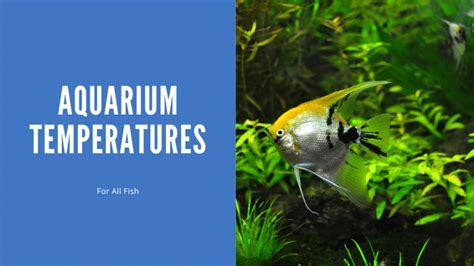Maintaining a stable and optimal temperature is crucial for the well-being and survival of aquatic organisms. However, achieving both control and stability can be a challenging task. This article delves into the intricacies of aquarium temperature control and stability, exploring the differences between the two concepts and providing practical strategies for managing both effectively.

Defining Temperature Control and Stability
Temperature control refers to the ability to adjust and maintain a desired temperature within an aquarium. This involves using heating or cooling devices to regulate the water temperature based on the specific requirements of the aquatic species.
Temperature stability encompasses the ability to maintain a constant temperature without significant fluctuations. This requires minimizing external factors that can affect water temperature, such as ambient temperature changes, sunlight, and heat loss or gain from the aquarium equipment.
The Importance of Temperature Control and Stability
Temperature plays a vital role in various physiological processes of aquatic organisms, including metabolism, growth, reproduction, and immune function. Optimal temperature ranges vary depending on the species, but deviations from these ranges can lead to stress, disease, and even death.
Control allows aquarists to provide the specific temperature required for the health and well-being of their fish, while stability ensures that aquatic organisms are not subjected to sudden temperature changes that can disrupt their biological processes.
Methods for Aquarium Temperature Control
Heaters: Submersible or in-line heaters provide a reliable method of raising water temperature to the desired level. They are typically adjustable, allowing for precise temperature control.
Chillers: Aquarium chillers are used to lower water temperature, especially in tropical aquariums or during hot weather conditions. They work by circulating cold water through a heat exchanger, removing heat from the aquarium water.
Maintaining Temperature Stability
Insulation: Insulating the aquarium with foam or other materials can help minimize heat loss or gain from the surrounding environment, promoting temperature stability.
Location: Placing the aquarium away from direct sunlight or other heat sources can reduce temperature fluctuations.
Constant monitoring: Regularly monitoring the water temperature using a reliable thermometer is essential for maintaining stability. Any significant deviations from the desired temperature should be addressed promptly.
Strategies for Balancing Control and Stability
Balancing temperature control and stability requires a holistic approach. Here are some effective strategies:
Gradual temperature adjustments: Avoid making sudden temperature changes, as this can shock aquatic organisms. Adjust the temperature gradually over several hours or days, allowing the fish to acclimate to the new conditions.
Use a thermostat: A thermostat connected to the heater or chiller can automate temperature control, maintaining a constant temperature within a specified range.
Monitor water temperature regularly: Monitor the water temperature frequently, especially during periods of extreme ambient temperature changes. This allows for timely adjustments to maintain stability.
Tips and Tricks for Temperature Management
Understand the specific temperature requirements of your aquatic species: Different species have varying temperature needs. Research and provide the optimal temperature range for the species in your aquarium.
Consider the size and volume of your aquarium: Larger aquariums require more heat or cooling to maintain the desired temperature, while smaller aquariums may be more susceptible to temperature fluctuations.
Use multiple heating or cooling devices: For larger aquariums or those with fluctuating ambient temperatures, consider using multiple heating or cooling devices to ensure even temperature distribution and stability.
Highlighting the Importance of Temperature Management
Aquarium temperature control and stability are essential for:
– Optimal health and well-being of aquatic organisms
– Preventing stress, disease, and death
– Creating a suitable environment for breeding and growth
– Maximizing the longevity and enjoyment of aquatic pets
Conclusion
Effective aquarium temperature management involves both control and stability. By understanding the differences between the two concepts and implementing the strategies outlined in this article, aquarists can create a stable and healthy environment for their aquatic organisms. Regular monitoring, gradual temperature adjustments, and the use of appropriate equipment and techniques are key to achieving optimal temperature conditions for a thriving and vibrant aquarium.





















